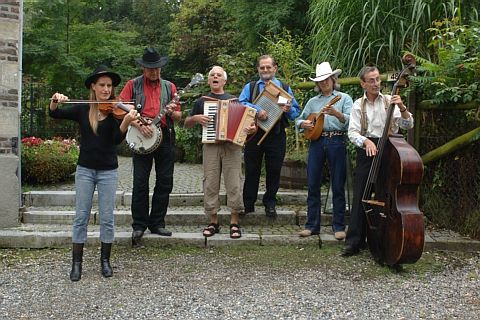
The Mosam Skiffle Train
Bio
|
The music
What is skiffle? If you open a dictionary to look up the word "skiffle",
nine times out of ten one finds nothing. In extensive dictionaries one will find
the description: skiffle - a type of music played on different sorts of
instruments. So you still know nothing! The exact meaning of the word is
difficult to trace. The term skiffle appears for the first time around the
nineteen hundreds in the poorer sections of northerly cities in the United
States. At that time it was not used to describe a musical style, but rather a
certain type of musical performance.
After the abolition of slavery, thriving cities such as Chicago, St. Louis, Kansas City and New York became end stations for migrating ex slaves. They brought with them their musical heritage in the form of Mississippi blues, the work song, barrel house ballads or simple melodies sung to them as children sitting on daddy's knee. They formed bands and played mostly on self-made instruments. Using crates, boxes and washboards for drums. Basses were concocted out of tea crates or washtubs. Even twelve-gallon jugs were often used to emanate a bassy tuba-like sound. Add to this a (self-made) guitar or banjo and piano, which usually could be found at the local bar, and you have a slight idea of how the "working man's" band was around the nineteen hundreds. They called themselves spasm or jug bands. In order to pay the rent, the barkeepers would organize parties which were given titles like "The Parlor Social", "The Struggle", "The Skiffle" or "The Too Terrible Party". Later these parties were referred to as a "boogie" or a "house rent party".
We first encounter the word "skiffle" in 1925 in the
name of the band "Jimmy O'Bryant and his Chicago Skiffle". Thereafter
a silence of about 20 years passes and in 1946 we hear about a group from
Chicago called "Dan Burley and his Skiffle Boys", with among others
Brownie McGhee on guitar and Pops Foster on bass.
Around 1954 the manager of Ken Colyer's jazz band, Bill Colyer, introduced the term "skiffle" in England, using the term to describe the combo
that played in the intermission of the jazz band's concerts. This combo played
renditions taken from old American spasm or jug band music. Add to this a dose
of English and Irish folk songs and the musical legacy of the early American
wandering troubadours such as Leadbelly, Woody Guthrie and Big Bill Broonzy.
Amateur musicians quickly followed and in no time were playing on washboards,
tea crates, washtubs, combs wrapped in cellophane and guitars. Becoming a rage
between 1955 and 1960, many of the latter British pop groups quoted skiffle as
one of their earliest inspirations.
Through the years the instruments became more professional. The tea crates and
washtubs were replaced by a double bass, the washboards by a drum kit and the
guitar became electrically amplified. But the character of the music remained
virtually unchanged.
"The Mosam Skiffle Train" consists of five musicians who practically all were caught up in the skiffle rage of the fifties of the last century and now on the edge of the new millennium have again taken up their old passion.
The musicians
Jean Innemee
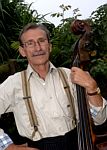
Guitar, bass, (lead) vocals. A true veteran in the world of music. He has
played in bands like The Mozam Skiffle Group, The Walkers (1 golden single, 1
platinum single) and Carboon (1 golden album).
Peter Houben 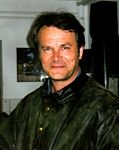
Guitar, banjo, bluesharp, (lead) vocals. Newest member of the band, replacing Harry
Sillen who was forced to leave the band for health reasons. Peter started to
play the guitar at the age of 10. He was inspired by The Beatles, The Rolling
Stones, Roy Orbison and Elvis. He roamed the country as a teacher but always
remained loyal to his music. After returning home to the south of The
Netherlands, he played with a band called "2Bonnheur b.v.". They
recorded an album called "Limbabwe Bloews" in 1996.
Maddi Bleize 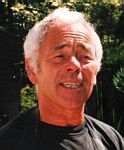
Washboard, accordion, (lead) vocals. He played with The Walkers for twelve
years and was once known as the "Elvis Presley of Limburg". Maddi is a
professional musician.
Michael Hamane

Lead guitar, harmony vocals. Michael is a well-known musician who also plays in
The Revival Band with Jean's brother, René. Coming from America, he started his musical
career in Europe as a member of American Gypsy. The first rehearsals and a first, unofficial, gig were already very promising.
Bärbel Ehlert 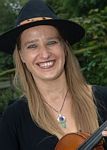
The youngest member of the group (in age). Bärbel was born in the south of Germany where she had a classical training in viola. She is also a qualified musical therapist. During her many travels she developed a musical taste that varies from country music to klezmer, from folk to rock. Among the groups that she played and plays in, are: Circo di Sento, Musicadans, The Firehouse
Jazzmen, Strawberry Spring.
Jules Bartels 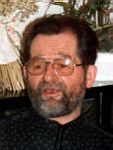
Jules Bartels is the youngest and most senior member of the band. Seventy-one years young,
a musical career that spans 56 years and that’s not likely to come to a standstill in the
near future, if it’s up to him. He was the founder of the Chaplin Band (“Let’s
Have A Party”) and The Bartel Band. Beside his membership of The Mosam Skiffle
Train, he also plays drums in “Scala”, the first Maastricht Accordion Society,
is musically active in several two-piece bands, playing the regional
party-circuit and always creating a wonderful atmosphere with their
interpretation of the traditional Southern repertoire.
See also: Discography and Biography of René Innemee and The Walkers